Lowell Week in Review: Memorial Day edition
It being Memorial Day weekend, instead of writing about Lowell politics this morning, I’d like to share the stories of some Lowell residents who gave their lives while in the service of their country.
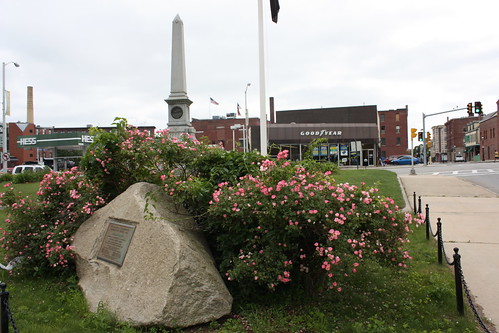
Donald Arcand Memorial on Arcand Drive
Donald Arcand – Vietnam War
Born in 1946, Donald L. Arcand grew up on Ford Street which was in Little Canada, where Fr Morissette Blvd is now. Donald graduated from St. Joseph’s High School in 1963 and volunteered for the Army. Trained as an infantryman, Arcand was assigned to an aviation battalion where he served as a door gunner on a UH-1 Huey helicopter. On September 1, 1965, his helicopter was hit by ground fire and exploded in midair, killing all aboard. His funeral took place a week later at St Jean Baptiste Church and he was buried in St Joseph’s Cemetery. On May 25, 1969, Arcand Drive was dedicated immediately following the Memorial Day parade. The memorial plaque sits in Monument Square, alongside the Ladd and Whitney Monument. It reads:
City of Lowell, Massachusetts
Northern Canal Renewal Area
ARCAND DRIVE
Dedicated on November 11 to the memory of
PFC Donald Leonard Arcand
Born in Lowell on February 13, 1946
Killed in action in Vietnam, September 1, 1965

Donald Arcand

Lorne Cupples – Cupples Square
Lorne Cupples – World War One
Lorne Lee Cupples was born on January 12, 1882 in Canada, the son of James and Salome (Babcock) Cupples. In 1886, the Cupples family immigrated to the United States and settled in Newport, New Hampshire. By 1908, Lorne Cupples had moved to Lowell and eventually became the superintendent of Whitall Manufacturing Company on Rock Street. Whitall produced “corset-covers, drawers, night robes, shirts, chemises, and dressing slacks.” The 1910 census identified Cupples as “superintendent, underwear company.” On August 17, 1908, Cupples married Marion J. Corner. They lived at 116 Grove Street.
Cupples enlisted in the U.S. Army’s reserve officer training corps (ROTC) at Fort Plattsburgh, New York. After training, he was commissioned as a Second Lieutenant and was assigned to the 303rd Machine Gun Battalion of the 76th Division which was stationed at Camp Devens, Massachusetts. Cupples landed in France with that unit in the summer of 1918, but was soon transferred to Company C, 101st Machine Gun Company, 26th Infantry Division, which was made up of men mostly from Connecticut.
The 101st was involved in heavy fighting during the St. Mihiel and Mesue-Argonne offinsives in the fall of 1918. At Brabant Wood north of Verdun on October 23, 1918, while firing in support of an attack by American infantry, the 101st came under heavy German artillery fire. In Company C, the German shelling killed three men and seriously wounded Lt. Cupples and three others. Cupples’ severe stomach wounds proved fatal and he died on November 2, 1918 in the 15th Evacuation Hospital. He is buried in the Meuse-Argonne American Cemetery, Romagne, France. His widow, Marion, became a nurse and moved to 441 Westford Street. After the war, the intersection of Pine and Westford Streets was named Cupples Square in his honor.
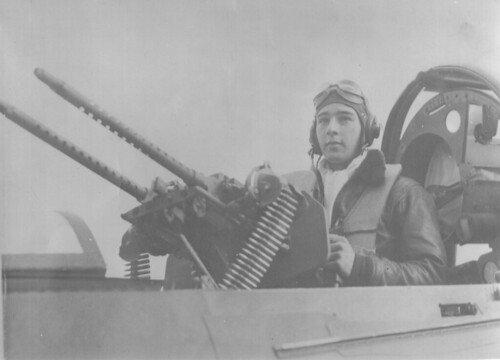
Normand Brissette. Photo courtesy of Tony Archinski
Normand Brissette – World War Two
Enlisting in the Navy in 1943 at age 17, Normand Brissette became a gunner/radio operator on an SB2C Helldiver flying from the carrier Ticonderoga. On July 28, 1945, Normand’s plane, piloted by Lt Raymond Porter was shot down off the coast of Japan. Both survived and were imprisoned with ten other American flyers at the Chugoku Military Police Headquarters in Hiroshima. There they stayed until August 6, 1945 when the Enola Gay dropped the atomic bomb less than a kilometer from their jail. All but Brissette and one other died instantly. Ten days later, the newly captured crew of a downed B-29 were imprisoned with Brissette and the other survivor who were both gravely ill from radiation poisoning. Both died the next day but the B-29 crew survived to relay their story. Brissette and the eleven other aviators are now memorialized by a plaque erected by the city of Hiroshima. Normand Brissette’s story is poignantly told in the recent documentary, Paper Lanterns, by local film maker Barry Frechette. The film also features Shigeaki Mori, himself a survivor of the atomic bomb, who has dedicated his live to identifying and commemorating Brissette and the eleven other US prisoners who perished from the bomb. When Barack Obama became the first sitting American President to visit Hiroshima, he sought out and embraced Mr. Mori for his kindness to these deceased American service members.
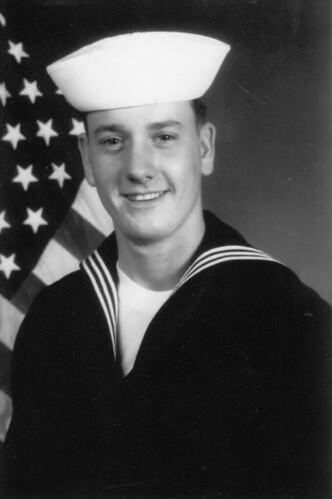
Scott Finneral. Photo courtesy of Irene Finreral
Scott Finneral – Gulf War
A Lowell native who enlisted in the Navy after graduating from Lowell High in 1988, Scottie Finneral and five comrades were killed when their MH-53 mine sweeping helicopter plunged into the Persian Gulf on September 14, 1991 during the first Gulf War. In 1996, the Massachusetts State Legislature named the walkway along the Merrimack River within the Lowell Heritage State Park the Scott Finneral Memorial Riverwalk.
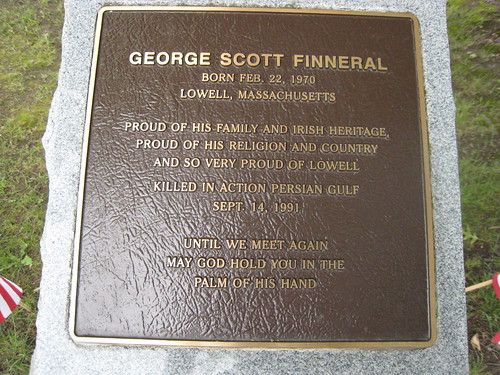
Scott Finneral Memorial Riverwalk plaque
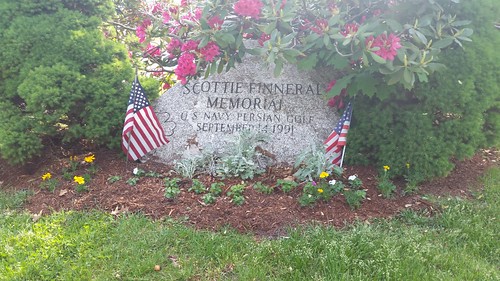
Scott Finneral Memorial, Wedge Street, Lowell
Adrian Bilodeau – Korean War
Adrian L. Bilodeau, born in New Hampshire on May 10, 1907 and became a career NCO in the United States Army, enlisting in 1928 and serving continuously on active duty through World War Two during which he served with the 526th Armored Infantry Battalion. After the war he lived with his spouse at 26 Crawford Street in Lowell. When the Korean War began, he was stationed in Okinawa with lightly armed occupation troops. Four hundred barely trained recruits were rushed from the United States to join the men in Okinawa to form the 3rd Battalion of the 29th Infantry Regiment which immediately deployed to Pusan, Korea, landing there in July 1950. Almost immediately, the battalion wandered into a massive North Korean ambush at Hadong that left half the American battalion killed or wounded. In the immediate aftermath of that attack, Sergeant Bilodeau organized an ambush that inflicted heavy casualties on an advancing North Korean unit which slowed the enemy advance. Because of the high rate of casualties suffered, the 3rd Battalion should have been deemed combat ineffective but the desperate situation demanded that the survivors go back into action almost immediately. Sergeant Bilodeau, then 43 years old, should have been assigned to a rear area job because of his age, but he remained at the front where he was killed by enemy fire on September 10, 1950. Adrian Bilodeau’s body was returned to Lowell. He is buried in St. Joseph’s Cemetery in Chelmsford.
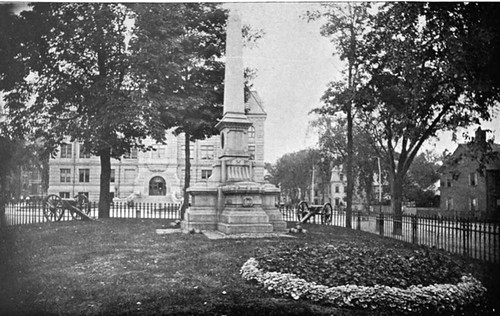
Ladd & Whitney Monument c.1904
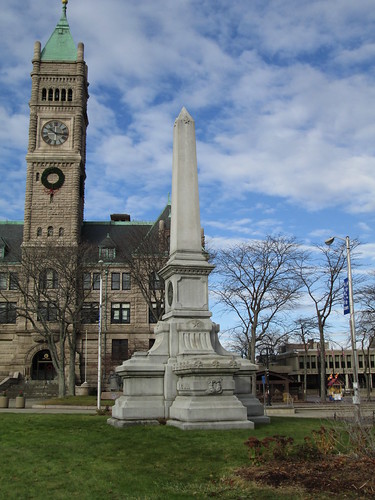
Ladd & Whitney Monument, c.2014
Luther Ladd and Addison Whitney – Civil War
The twenty-five foot high granite obelisk that sits on a small patch of grass in front of Lowell City Hall commemorates seventeen year old Luther Ladd and twenty-two year old Addison Whitney, two Lowell mill workers who, along with Sumner Needham of Lawrence and Charles Taylor of parts unknown, were the first soldiers to die in the American Civil War. Known as Monument Square, this parcel is also the final resting place of Ladd and Whitney who are both buried there. Whitney was born in Waldo, Maine, on October 30, 1839 and had lived in Lowell for two years prior to his death. He had been in Lowell two years, in the employ of the Middlesex Company. Ladd was born at Alexandria, New Hampshire on December 22, 1843 and had been in Lowell long enough to enlist in the 6th Massachusetts Volunteer Infantry Regiment along with Whitney and several hundred other men from Lowell, Lawrence, Groton and Acton.
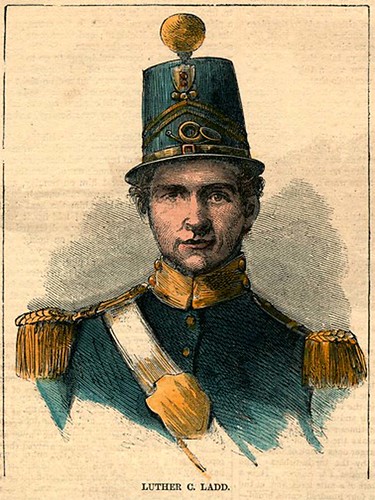
Luther Ladd

Addison Whitney
The day after Fort Sumter surrendered, President Abraham Lincoln called for 75,000 volunteer troops to come to Washington to put down the rebellion. One of the first units to mobilize was the 6th Massachusetts. As the regiment passed through Baltimore on its way to Washington on April 19, 1861, it was attacked by a mob of pro-Southern civilians. Ladd, Whitney, Needham and Taylor were all killed and about 32 of their comrades were wounded. The regiment continued on to Washington and the bodies of Ladd and Whitney were returned to Lowell. The monument that bears their name was dedicated on June 17, 1861.
Thank you for sharing the stories of these Heroic Men from Lowell. We all should be very proud of these young Heroes!
Don’t forget Billy Callery, first Lowellian killed in Vietnam, from the Highlands. Callery Park is named after him
Thank you for this article
Very interesting. I knew that a number of US POWs were killed in the atomic attacks, never realized one of them was from Lowell. Great info.
My Uncle John Quinn P.E.C. CO L 134th INF. 35th Div KIA St. Lo France 1944
The 134th had lost 102 killed in action, 589 wounded and 101 missing. The expenditures of sweat and blood can never be measured.